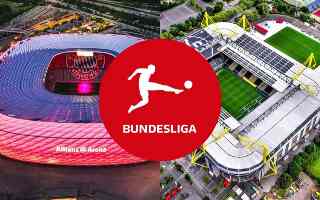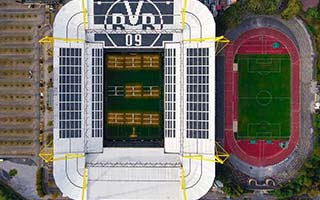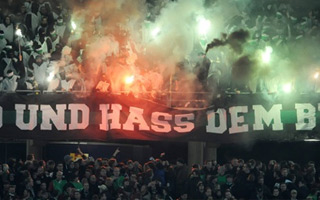Vonovia Ruhrstadion
| Capacity | 26 000 |
|---|---|
| Country | Germany |
| City | Bochum |
| Clubs | VFL Bochum |
| Other names | Dieckmanns Wiese, Stadion an der Castroper Straße (until 1972), Ruhrstadion (1972–2006), rewirpowerSTADION (2006–2016) |
| Inauguration | 08/10/1911 |
| Renovation | 1921, 1976–1979 |
| Record attendance | 50 000 (Bochum – Wattenscheid, 21/07/1979) |
| Address | Castroper Straße 145, 44791 Bochum |
Advertisement
Vonovia Ruhrstadion – stadium description
What were the beginnings of the VfL Bochum stadium?
In 1911, SuS Bochum 08 leased a meadow outside the city limits from the farmer named Dieckmann. The club set up their own football pitch on it and played their first match on October 8, 1911 against VfB Hamm attended by 500 spectators. The ground was initially nicknamed the Dieckmanns Wiese and was later known as Stadion an der Castroper Straße (after the street on the south side).
In 1919, SuS Bochum 08 merged with TV zu Bochum to form TuS 1848 Bochum, which was the stadium host from then on. Works to extend the ground began shortly afterwards and were completed in 1921. According to various estimates, the stadium could then hold between 30,000 and 50,000 spectators. On July 2, 1922, the German national team played on the pitch for the first time, drawing 0-0 in a friendly against Hungary. 1938 saw another merger, which resulted in the formation of VfL Bochum.
After World War II, the stands were extended further. In the 1950s, 2,700 seats (1,300 of which were covered) were created in the central part of the main north stand. In 1971 VfL Bochum were promoted to the Bundesliga for the first time. On October 7, 1972 the stadium was equipped with floodlights. The venue was renamed Ruhrstadion. Planning also began for a complete redevelopment of the arena, which was finally approved by the city council in November 1975.
When did the Vonovia Ruhrstadion get its current appearance?
The complete reconstruction of the stadium began in March 1976 and lasted until July 1979, when the athletics track was removed, completely new reinforced concrete stands were built around the entire field, and the arena was given its modern form. The original capacity was, however, much higher than the current one and was less than 50,000 spectators, although a large part of the audience had standing places (38,000). In later years, after the reduction of terracing and the installation of plastic seats, the capacity of the venue fell below 30,000 spectators.
The redevelopment was carried out in four phases, stand by stand, and during the works VfL Bochum's footballers continued to play their matches at the stadium (with the exception of the end of the 1975/76 season, when seven home matches had to be played at other venues, six at the Stadion am Schloss Strünkede in Herne and one, against Schalke 04, at the Westfalenstadion in Dortmund). The Städtisches Hochbauamt Bochum was responsible for the design. The opening of the fully rebuilt stadium took place on July 21, 1979 with the hosts playing against SG Wattenscheid 09 (3:0).
What changes have taken place at the VfL Bochum stadium in the 21st century?
In August 2003, a new five-storey building with extensive facilities, the so-called VfL-Stadioncenter, was opened adjacent to the main (north) stand. This building was further extended before the Women's World Cup in 2011. In 2006, the stadium was renamed revirpowerSTADION in connection with a sponsorship deal. After a change of title sponsor in 2016, the venue is named Vonovia Ruhrstadion. The stadium's centenary celebrations took place in October 2011.
What events has the VfL Bochum stadium hosted?
In 2004, the stadium hosted part of the European Under-21 Championship (including the final), in 2011 it was the venue for four group stage matches of the Women's World Cup and the year before that, the arena was used for the Under-20 Women's World Cup. The German national football team (and women's national team) has also played at the stadium several times. The venue has also played host to concerts and open air festivals with world-famous performers.
What does the Vonovia Ruhrstadion look like?
The stadium has a typical football rectangular layout. The pitch is surrounded on all sides by single-tier stands that can hold up to 26,000 spectators. There are small indentations in the corners of the stands, providing space for four lighting masts. The eastern stand, intended for the home team's most ardent supporters, and the visitors' sector, located in the south-western part of the stadium, have standing places. The other sectors are equipped with blue plastic chairs. VIP boxes are located on the main stand (north side).
The stands are fully covered and the space between the roof and the auditorium is filled with glass panels, which make the facility even more enclosed from the inside. The stepped stands and the roof are supported by 38 characteristic sickle-shaped girders. The structure has no facade, and the outside is raw concrete. Adjacent to the main stand is a building with extensive facilities, the so-called VfL-Stadioncenter.
The surroundings of the stadium include an indoor arena, training pitches, tennis courts and a 400-metre athletics track. The venue is located within walking distance of Bochum's city centre. The stadiums of two of the Ruhr region's biggest football clubs, Borussia Dortmund and Schalke 04, are located within a radius of a dozen kilometres.
Advertisement
Pictures
-

13.11.2008 © Sh@tei 
27.10.2021 © mate_hopping_ruhrpott 
24.08.2018 © mate_hopping_ruhrpott 
24.04.2022 © mate_hopping_ruhrpott 
18.03.2022 © mate_hopping_ruhrpott 
27.10.2021 © mate_hopping_ruhrpott 
19.03.2022 © mate_hopping_ruhrpott 
13.11.2008 © Sh@tei 
13.11.2008 © Sh@tei 
13.11.2008 © Sh@tei 
13.11.2008 © Sh@tei 
13.11.2008 © Sh@tei
Related news
2025
2024
2022
2021
2019
2017
2015
-
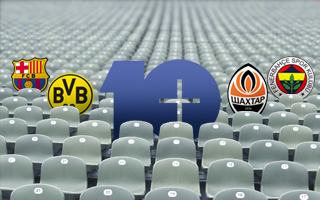
10+ Ranking 2015: Attendances in Europe (Part 2. The Clubs)
Borussia, Barca and Man United – lovely dominant trio. But it wasn’t them who gained most fans last season. Check all 217 clubs that draw an average crowd of 10,000+!
-
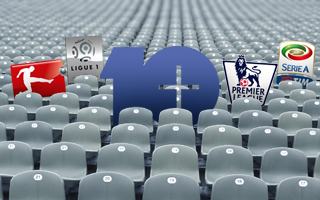
10+ Ranking 2015: Attendances in Europe (Part 1. The Leagues)
Numbers don’t lie: French Ligue 1 outgrew Italian Serie A as Europe’s fourth largest league. Premier League seems unlikely to catch up to Bundesliga, while Turkey, Ukraine and Scotland are down.
2014
-

Germany: “Zero provocation instead of zero tolerance” - it works!
From August the most football-mad region worldwide was undergoing a serious test: how will safety change with less police force deployed? Just as many experts predicted, it improved.
-
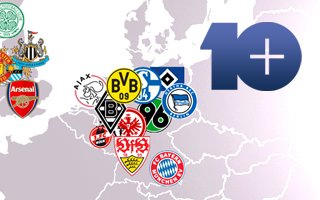
10+ Ranking: Here are the best European clubs by attendance
There are 229 clubs in Europe enjoying on average 10,000 spectators and more. We list all of them to show the Continent’s most magnetic teams. Some fanbases really deserve praise for their participation, right Rangers/Portsmouth?
2012
-
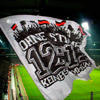
Germany: Controversial safety regulations approved, what now?
Yesterday 36 top clubs voted on proposed safety regulation changes with vast majority in favour. Many fans see this as clamp-down on fan culture, but others are encouraged by events of past few weeks. What's changing inside German stadia?
-
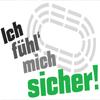
Germany: Fans don’t feel safe?
Temperature around German football safety has been growing for months and is almost as hot as the flares set off by fans inside stadiums. Flares much hated by football governing bodies who suggested a new safety system, claiming people don’t feel safe at football games. They only forgot to ask the people, whether this is the case…

 StadiumDB
StadiumDB